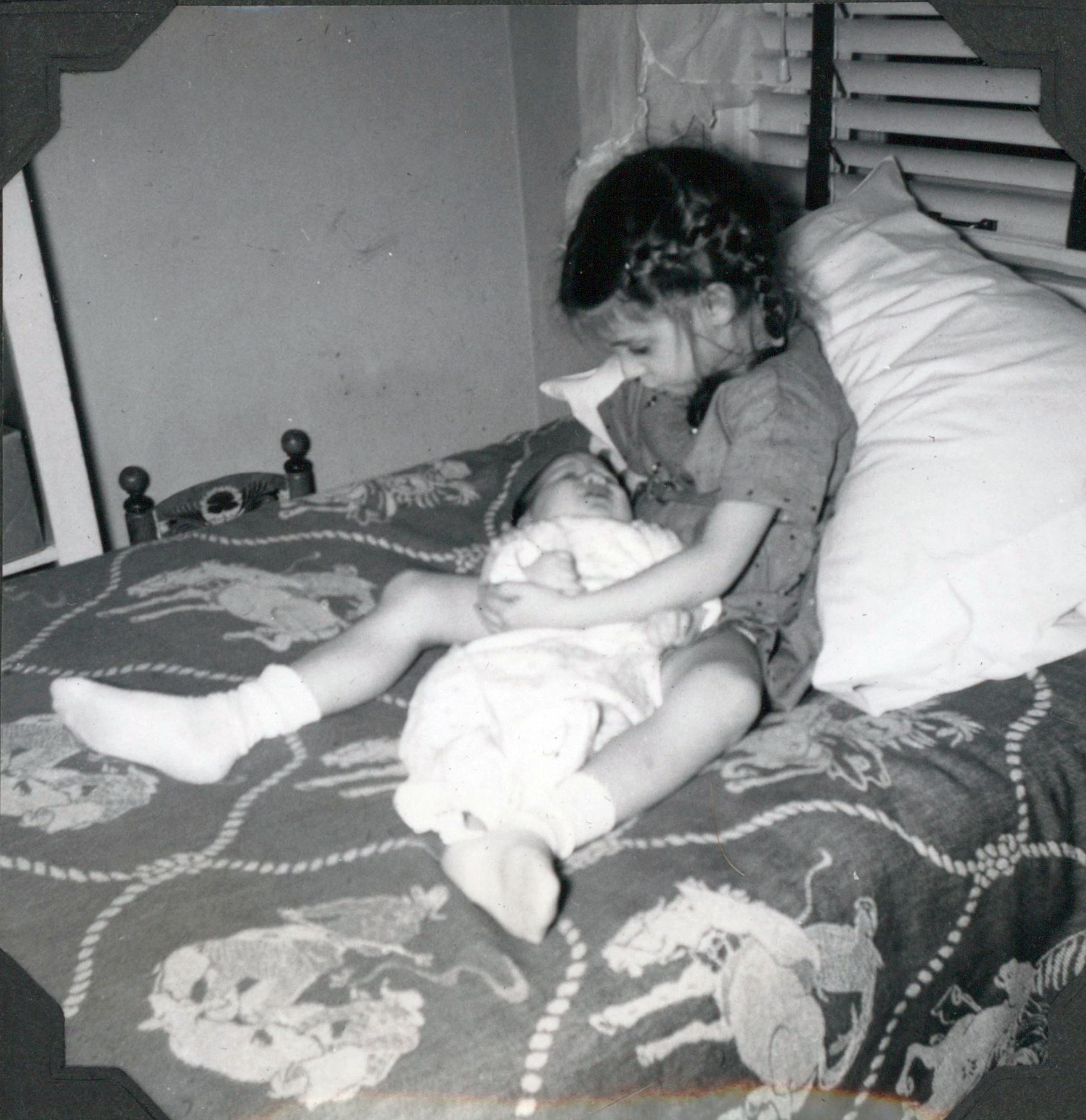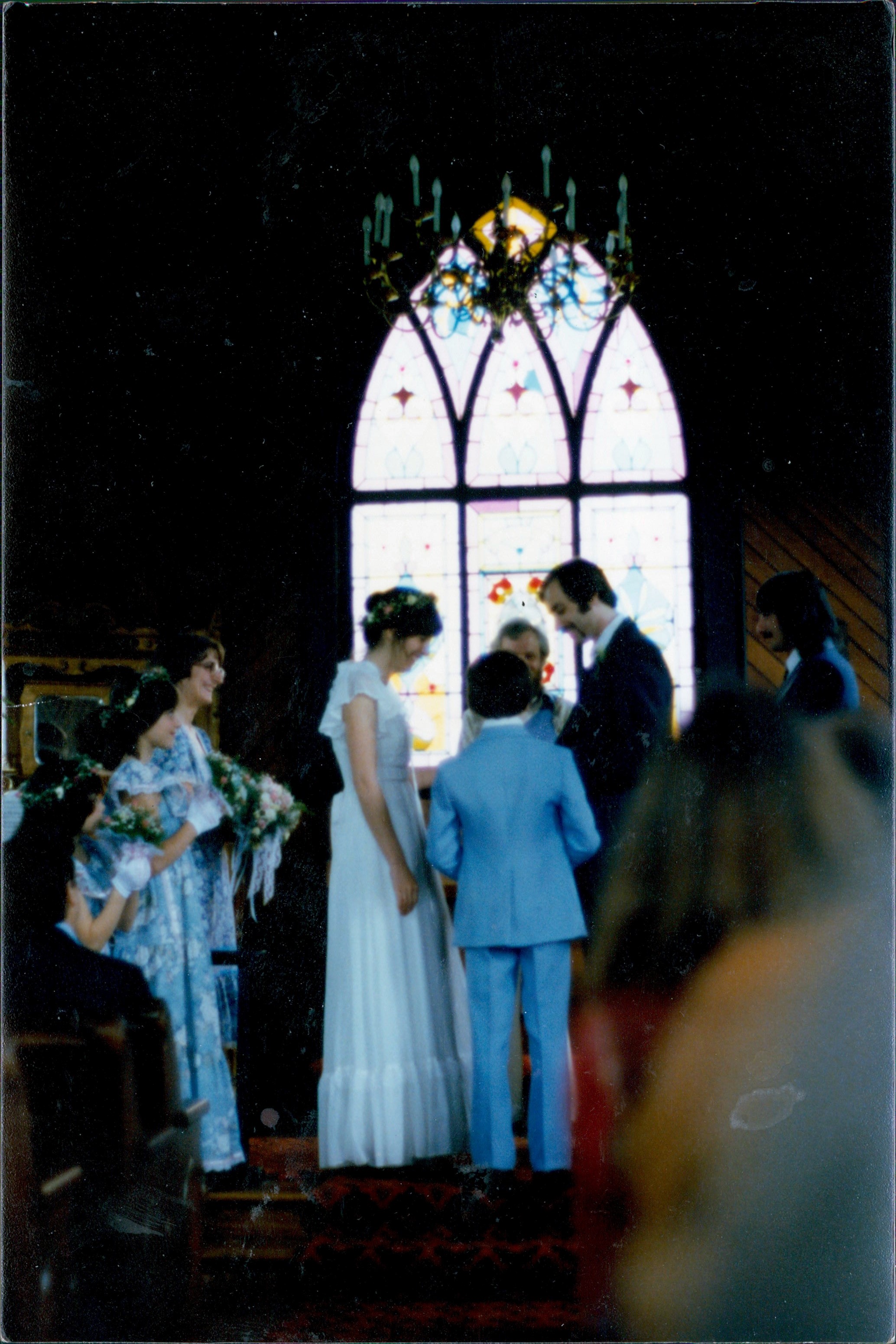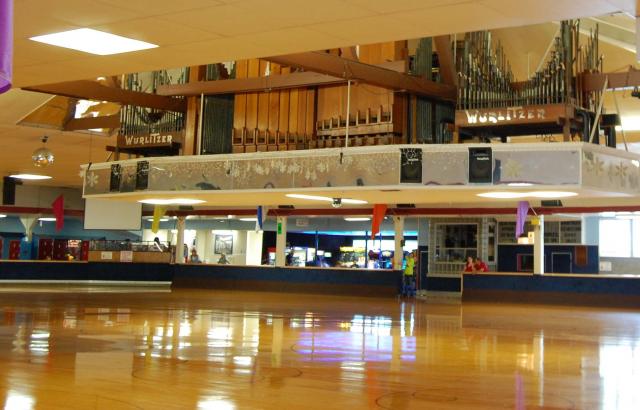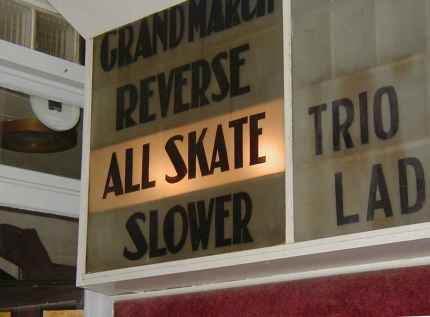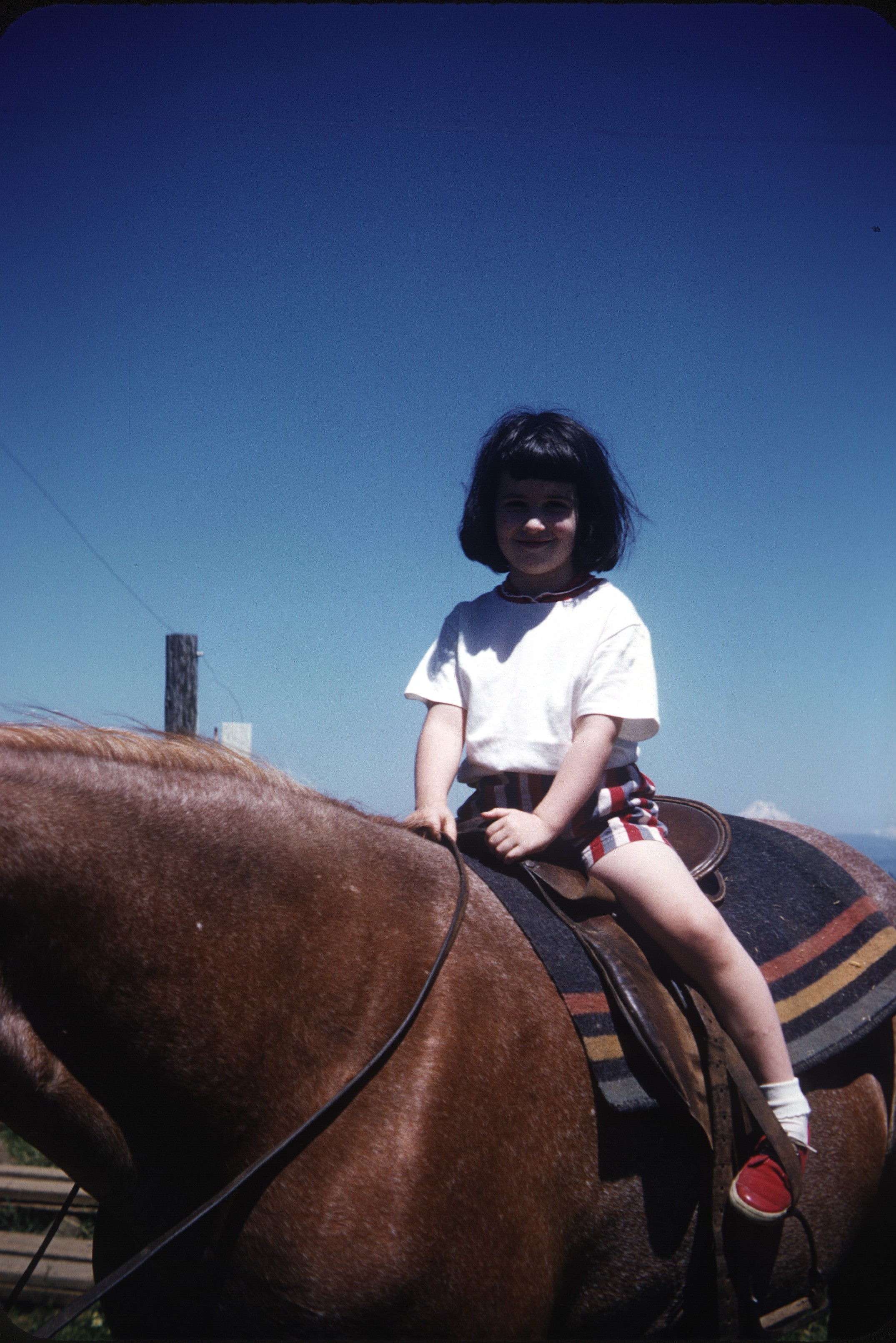My eyes are very different from one another. One is used to seeing close, while the other sees distance. After the cataract removal in the near eye, my brain has not yet adjusted. I have still not managed to be able to stay on the computer long enough to catch up with everyone. I miss the interaction and look forward to being able to rejoin you all. I have a second surgery in three weeks, but I hope to have an intermediate plan to see in the mean time. Until then, peace to you all.
Month: January 2021
“See You Later!”
Tomorrow morning I am having the first of two cataract operations, this time on my left eye. I will be off for a couple of days until I get used to seeing with the “refurbished” eye.
See you later alligator.
“Thinking of Patsy”
Those of you who have followed me for a while know that I lost my younger sister three years ago. Today was her birthday, and it gave me a chance once again to reflect on what a sweet spirit she was born with and carried with her through life. She suffered greatly during her life, losing both her husband, two of her children, and three bouts of breast cancer, the last claiming her. Throughout it she remained more upbeat than I ever could have been. She relied deeply on her Christian faith and when she was near death assured me she would “see me later.”
She was a very compassionate nurse and I think she would have come out of retirement to tend to covid victims. The disease would have broken her heart as she watched politicians downplay the pandemic and citizens disregard common safety precautions. While I miss her dearly, I am grateful she isn’t having to live through this dark time for medical professionals.
Give those near you a big smile from me and Patsy, a girl almost always smiling.
“Rolling, Rolling, Rolling By the River”
Susanne reminded me about roller skating at indoor rinks, and I also have her to thank for sharing the “slideshow block” in the block editor. As I write I will refer you to each of the four photos above which you can view using the arrows. Cool trick. Thanks Susanne.
I have written before about loving to roller skate outside at my grandparents because they had sidewalks. At home, however, there was no place to skate outdoors. Fortunately we lived just across the river from the magnificent Oaks Park roller rink. Built in 1905 and in use continuously since, it featured a huge Wurlitzer organ shown in the first picture. One could watch the organist through a glass window as he theatrically played the enormous instrument. A style of music which I will forever associate with roller skating plays now and then at church, causing me a quiet chuckle.
We rented skates at the counter pictured in the second photo. Generally the girls’ skates were white and the boys’ brown. To my occasional dismay sometimes they had to substitute the equivalent size boys’ skates when my size was already rented. The lace up leather skates had been used for years, but were well maintained and worked well.
The third photo shows the variety of designated times for the rink. When the light changed, for instance, from all skate to couples only, they would clear the floor and only let couples back on. As they undoubtedly planned, this was our chance to head for a snack. When things got rowdy they would flash the “Slower” sign and floor monitors would make sure we complied. You can barely make out the top direction “Grand March.” Each two hour skating session ended with one of the floor monitors holding a huge ring. You could join one of four lines of skaters radiating out from the ring. The center figure started turning in circles as we all began skating. Faster and faster we went until skaters at the end let go, leaving stronger ones hanging on.
The fourth photo shows one end of the rink where you could practice racing up and down over speed bumps. I always loved zooming back and forth there when I had the chance.
What about the river in my title? Oaks Park was built next to the Willamette River which routinely flooded. After having to repair damage after two major floods, the owners made it possible to float the floor if another threatened. Until then, things keep rolling along, although covid has closed the rink for a while.
“On Thin Ice”

The first time I went ice skating was at a shopping center. We didn’t yet call these malls, and it was outdoor in a new development called Lloyd Center. Its big draw was covered areas so you could “shop in the rain,” a real incentive in very green(and rainy) Portland, Oregon. For a small amount I could rent a pair of skates and work my way tentatively around the rink, mainly holding onto the rail as are many others doing in the postcard above. As you can tell from the crowd watching from above, ice skating was a novel sight for most and quite compelling, especially the stunts of the expert skaters. I never advanced beyond the rail gripping stage at Lloyd Center.
Arriving in Massachusetts as a college student I learned that people actually ice skated on frozen ponds. This amazed me so much that I promptly bought my own pair of ice skates and went with a friend to try them out. As you can imagine, the experience at the shopping center had in no way prepared me for outdoor skating. Most terrifying, there was no railing to grip! I fell a few times and abandoned my dream of becoming “Hans Brinker’s” sister on ice.
But remembering these experiences took me back to another snowy day with my pals Dude and Skipper. There was a shallow pond in Skipper’s yard that had frozen over. A small hill lay to its side. The ice looked tempting, so we all got in a red wagon and rolled it down the hill onto the pond. We were sure it would be fun to sit in the wagon on the ice. Once we hit the pond the ice broke, we fell in and our parents rushed to haul out three disgruntled six year olds. Despite our imagination, this was not a vast lake, but only about a six inch deep pond, so no real safety issues were a concern of the adults. I suspect they would have forbidden the stunt, but they were indoors and we were outdoors.
Our parents had often warned us about our behavior by saying we were “skating on thin ice.” They were from Winnipeg, Manitoba and Buffalo, New York, so the saying meant something to them. Until that afternoon, the metaphor made little sense. Now it most certainly did.
“Girls and Horses”
I am not sure how it is outside of the western United States, but there every girl I knew went through a period of being “horse crazy.” My late sister Patsy, pictured on the right, kept that love up for years. She collected Breyer horse models, rode at a local farm, and read every horse book she could find. Me, not so much. Perhaps you can see that from my somewhat dubious expression in the photo on the left.
We had many opportunities to ride. A friend of my parents owned a large farm and we rode around it. At the Oregon coast we frequently went on trail rides along the beach in a line of other riders. We were assigned quite docile steeds, fortunately, so the experience was pleasant.
My last experience on a horse proved that it is really not my passion. While on vacation in Canyon de Chelly in Arizona, my daughter wanted to have the two of us rent horses from the local Navaho family who kept them. I was clear that neither of us was particularly used to riding. Accordingly the father sent us out on the valley floor on one very old aged horse(me) and one young looking pony (her.) Rather than taking us himself, he sent his 10 year old son as guide. As I plodded along, the boy and my daughter took off at a fast pace laughing and delighting in the speed and distance between them and me. Realizing that she was perfectly safe, I sat on my now even slower horse and smiled.
Do girls love horses other places? If not, is there another animal that they go crazy over?
“January 20, 2021 United States”


Song to accompany the transition sung by the Beatles:
And truth makes a reappearance in the nation.
“Teeter-totter Redux”

Clearly pre-pandemic, but a wonderful response to a wall meant to separate. Its creators just won the design of 2020 award from London’s Design Museum.
Children always know we have much more in common than adults often believe.
“Blanket Forts and Treehouses”

Adults often want to spend time away from children, but it is equally true that kids like to get away from grownups. They construct all sorts of structures to allow them to hide out for a while. Above is a simple fort made of sheets and chairs, hastily assembled by two kids playing detective.
My friend Skipper had a cloth teepee that he set up in his room to retreat into. I had a cloth that fit perfectly over a card table which was designed to make the covered table look like a little house with an opening to crawl in through. My siblings and I used couch cushions, chairs and blankets to make a space to hold four kids, a dog and two cats. The neighbor twins had a tree house, but we never were so lucky. I did carve out a space for myself under several fir trees among violas and buttercups and had little fairy tea parties there.
It turns out that the need for a sheltered space continues through our lives in different ways. In grade schools teachers have come up with various strategies for children who are feeling overwhelmed by emotion. Sometimes it is a corner with pillows, sometimes a special chair, sometimes just a desk away from the other kids. Unlike being sent to the corner as punishment, the child is offered a chance for a little break to settle down while still being with the class. As adults we too sometimes need to cool off. Instead of raging at one another, we take time outs for ourselves and go to a place similar to a blanket fort, perhaps the back yard or the car. I know mothers who have locked themselves in the bathroom to get their sanity restored.
I would love to hear about tree houses, forts, hideouts and caves that my readers once treasured. By the way did they have signs like “No Boys Allowed?”
“Tomboys?”

Growing up some girls were known as “tomboys.” Unlike the connotations around the word “sissy,” there seemed nothing bad about the label. It referred to girls who liked to climb, run, do sports and generally play anything except dolls. Looking back at my elementary school days, I realize that the majority of the girls in my grades before puberty were all tomboys.
I don’t know if it was because we were in Oregon or because of the specific nature of my little school, but the most admired girls were very athletic. Being “cute” or “pretty” really didn’t seem to make any difference in popularity. We might have to wear skirts and dresses at school, but that didn’t stop our activities. The only hitch I had was when I transferred in second grade to this new school. At the old one we hung upside down without pause. At the new one I was quickly informed that I needed to wear shorts under my dress to do the same stunt.
As I mentioned a couple of days ago, my friends early on were all boys and I loved dressing up as seen above in my father’s necktie and my cowboy hat and gun. In grade school I made friends with girls, but even in fifth grade my best friend and I spent a long time debating whether Annie Oakley or Dale Evans was our idol. We could still imagine ourselves riding into the sunset with either one.
Seventh grade seemed to be the demarcation line for becoming “ladylike.” We went to dancing school, learned how to follow, not lead, how to wear gloves and to be “demure.” It seemed agreed that it was time to put our “tomboy” self behind us. Most of us did.
How does it go for tomboys today?

